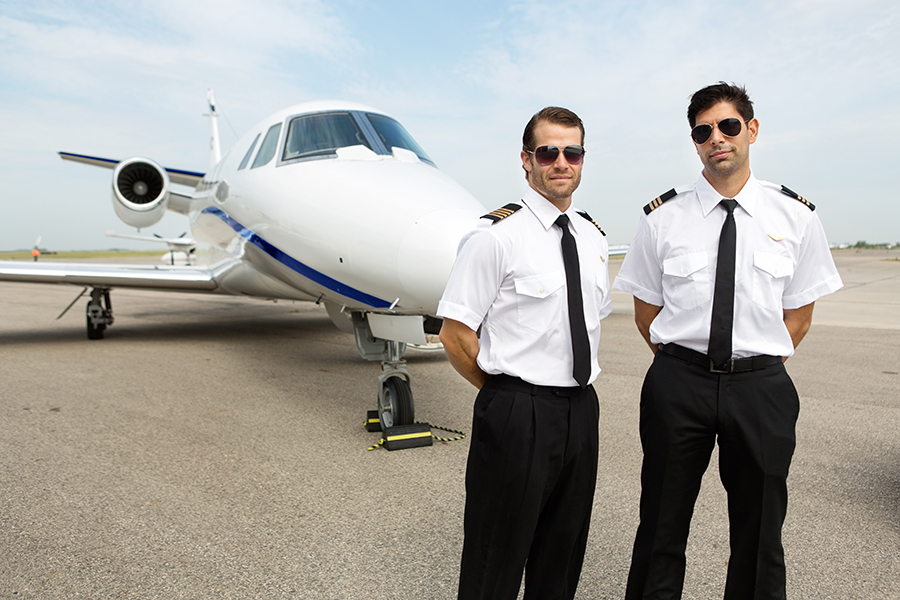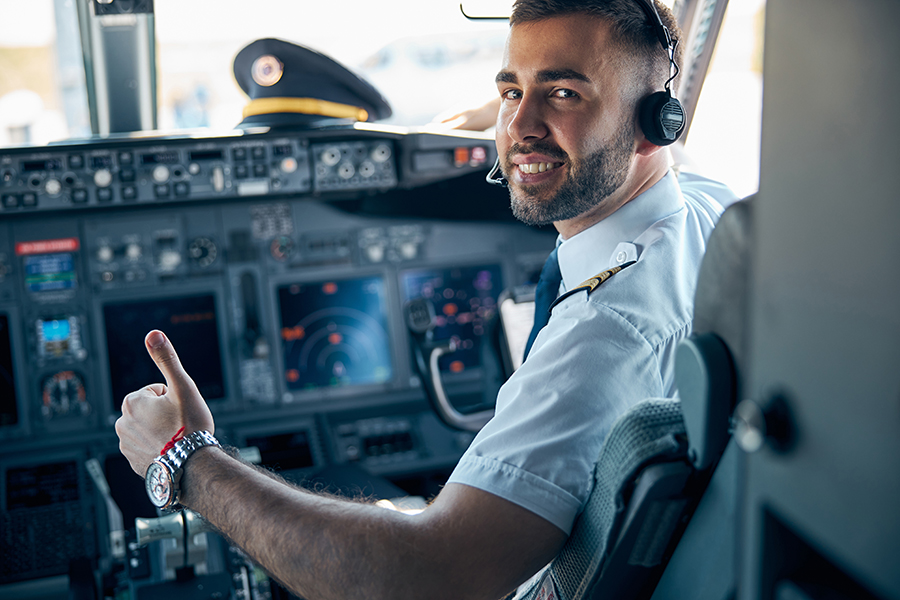The shortage of qualified pilots in the United States is a problem that will only worsen. Airlines are already feeling the pinch and are significantly increasing their hiring efforts after a substantial hiring freeze during the pandemic. There are several reasons for the pilot shortage, primarily because many pilots retired early while others entered different careers after the pandemic. Aviation schools are trying to fill the gap by training more pilots, but it will take time to make a dent in the problem.
The Return of the Pilot Shortage
Once again, airlines around the world are struggling to find qualified pilots. In the United States, this is due to an aging workforce that will soon retire, fewer military pilots leaving active duty, prohibitively high training costs that block many would-be flyers from starting their careers, and pilots who retired early or pivoted to different jobs during the pandemic.
This issue is not limited to the U.S. In China and other places where air travel is growing quickly due to a booming middle class, airlines can’t keep up with demand.
Regional airlines are particularly affected by this shortage compared to their low-cost counterparts.
Causes and Consequences of the Pilot Shortage
The pilot shortage in North America is a result of multiple factors, such as the country’s workforce being older than average, with more baby boomers hitting the required retirement age. In addition, there are fewer potential recruits from the military as conflicts are scaled down and the use of drone technology increases. However, these long-term trends would not have been an issue at this stage if it weren’t for pilots taking early retirement in droves during the pandemic.
According to the U.S. Bureau of Labor Statistics, the 2021 median annual pay for airline pilots, co-pilots, and flight engineers was $202,180 – a number that has risen in recent years due to contract negotiations between pilots and airlines. This is significantly cutting into airline profit margins.
Over the near term, more extensive compensation packages are unlikely to be enough to address the shortfall. Becoming a pilot is expensive and time-consuming — costing as much as $100,000 and, in the United States, requiring 1,500 flight hours for airline certification. Training facilities also have a bottleneck as they balance recertifying pilots returning from COVID-related furloughs and training new candidates at the same time.
The competition for airline pilots is likely to significantly impact regional carriers, especially those that aren’t affiliated with more prominent airlines offering worldwide routes. Even though they have smaller budgets and lower profit margins, regionals are raising salaries to compete. But they’re losing pilots at almost unsustainable rates. If regionals can’t receive and keep enough pilots, they may have to fly fewer flights, reducing travel options for people outside of major airline hubs.
The U.S. Isn’t Alone
The Middle East and Europe are expected to experience the major pilot shortage North America is facing within the next few years.
Currently, China has more pilots than needed because of the strict travel restrictions in place due to their zero-COVID policies. However, as these restrictions are lifted, and air travel begins to rise again, China will see a meteoric rise in the demand for pilots.
Only Latin America and Africa are not expected to see a shortage of pilots. In Latin America, demand is not expected to outpace supply, and in Africa, a small shortfall is likely to shrink over the decade as pilot availability increases.
Why Hasn’t the U.S. Solved the Pilot Shortage?

The issue is more complex than simply incentivizing and training pilots.
Some have suggested raising the mandatory retirement age from 65 to 67. While this would reduce the shortage, it is unlikely to have significant effects. Airline pilots close to retirement age generally work fewer hours, take more time off than their younger counterparts, and spend more time training other pilots. This means that a senior pilot retiring two years later is not necessarily equivalent to an extra two years of flying that a moderately experienced pilot would do.
One regulatory solution is to lower the 1,500 flight-hour requirements for an airline pilot certification. Although this would make it cheaper and quicker to train new pilots, there are also safety concerns that cannot be ignored. It is likely that this would not be the wisest solution to the pilot shortage problem.
To make the profession more accessible, airlines are beginning an array of financing programs to support candidates through the various stages of training. These programs could be expanded to provide more sponsorship to aspiring pilots, giving them the needed support and security in the early phases of their careers.
Finally, the industry could strive to bring women and minorities into the hiring pool, potentially decreasing the shortage.
It would take years to feel the positive effects of any attempt to increase the number of pilots. The airlines are feeling pressure from the pilot shortage and are significantly increasing their hiring efforts. However, it will take time for the supply of pilots to catch up with the demand due in part to the long training cycle and years required to build experience.
What Airlines are Doing to Address the Problem
While airlines are trying to keep their operations afloat and running smoothly, the pilot shortage may not even be their only concern. Regardless of more pressing issues, if the pilot shortage issue isn’t addressed, it could make it difficult for the airline to grow in the future.
There are three primary areas where airlines can reduce the likelihood of future pilot shortages:
- Reduce the number of staff needed: Having fewer pilots on staff can save airlines money, but only if they’re productive with the crew they have. By assessing and optimizing their current operations, they can find ways to be more efficient and use less manpower.
- Invest in training: By allocating capital to build in-house flight schools, airlines could potentially attract students and hire them at competitive rates while providing incentives such as favorable financing.
- Reduce churn: Airlines need to understand that other companies will probably try to snatch up their pilots, and airlines will need to take steps now to ensure they stay with them.
The chance of an airline’s successful recovery lies in its ability to quickly replenish its pilot ranks. Those that act now will be able to seize opportunities more easily as demand for air travel starts to rebound.
How Flight Schools are Trying to Fill the Gap

The global pilot shortage is positively influencing flight schools. With the increased demand for pilots, schools are seeing more students enrolling in their programs. Airlines are also starting to invest in flight schools, which is helping to improve the quality of the education these schools offer. This is good news for the future of aviation, as it will help to ensure that there are enough pilots available to meet the needs of the airline industry.
Flight schools don’t view the pilot shortage as their problem to solve, however. By training more pilots, they are playing a vital role in ensuring that the airlines have the personnel they need to continue operating; But airlines aren’t necessarily their clients. Therefore, airlines need to incentivize the growth of quality flight schools and should consider purchasing them outright.
The market will eventually correct itself without external intervention, but airlines don’t have the luxury of time
The Future of Air Travel
So far, passengers have not seen significant effects of the pilot shortage. However, it is likely that passengers may start to feel substantial effects soon. This is because some airlines are already beginning to reduce their flexibility regarding flight schedules due to the shortage of pilots. As a result, passengers may experience longer wait times, canceled flights, and missed connections.
Conclusion
The airline industry’s global pilot shortage is a real and pressing issue. Airlines are feeling the pinch as they struggle to find qualified pilots to fill their vacant positions. The problem will only worsen in the coming years as demand for air travel increases.
There are several reasons for the pilot shortage, primarily because many pilots have retired or entered different careers after the pandemic. Airlines are taking steps now to address the problem, but it will take time for the supply of pilots to catch up with demand.
Aviation schools have stepped up their training efforts, which will remedy the current pilot shortage. Although this is a start, it will be some time before the issue is sufficiently alleviated.



